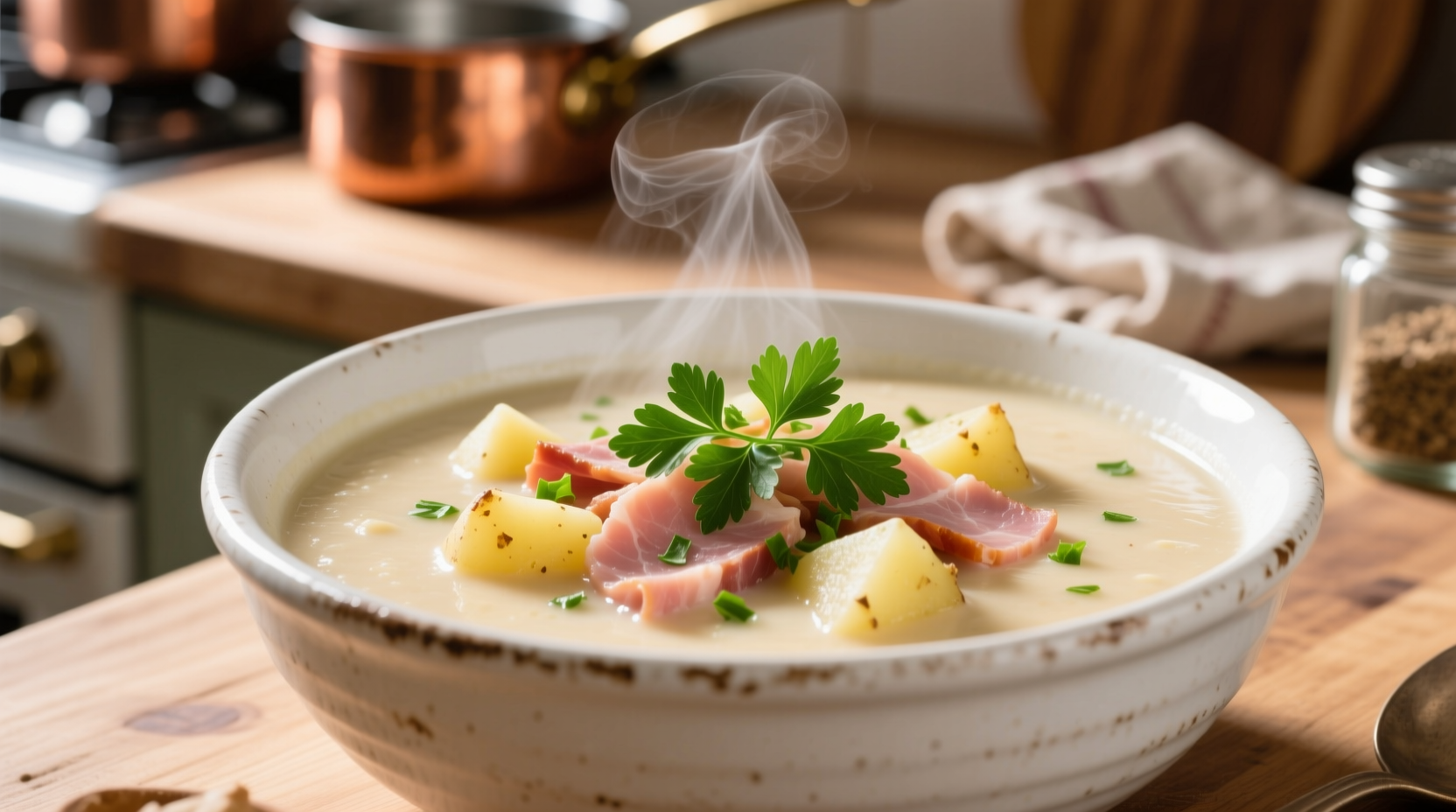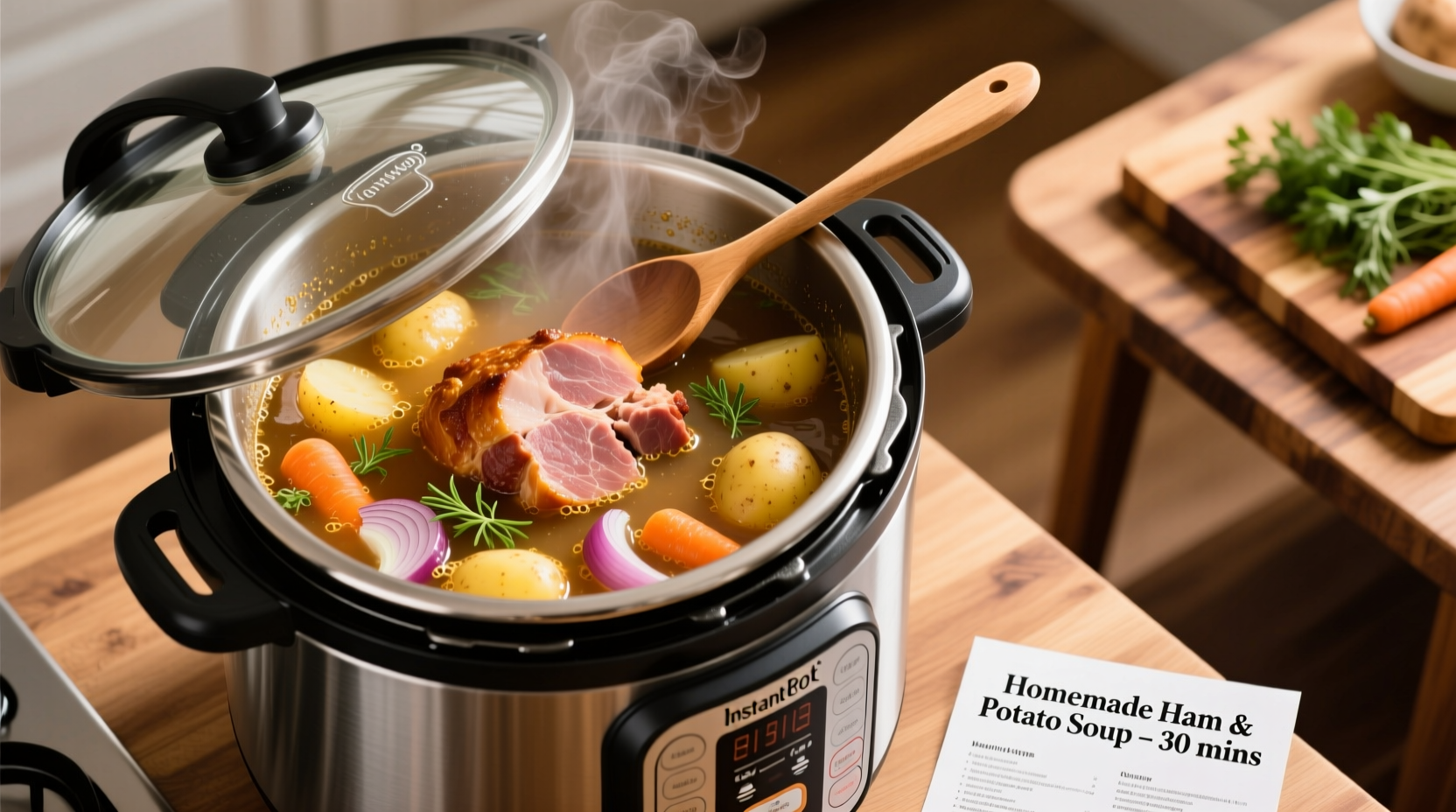Transform your leftover holiday ham into a comforting meal faster than traditional methods. This Instant Pot ham and potato soup recipe eliminates hours of simmering while achieving the perfect creamy texture through natural potato starch release. The pressure cooking process intensifies flavors while maintaining distinct potato shapes—no more mushy results from overcooking.
Why Your Instant Pot Excels for Potato Soup
Pressure cooking fundamentally changes potato soup preparation. While traditional stovetop methods require 2+ hours of careful monitoring to develop flavors without overcooking potatoes, the Instant Pot achieves depth in under 30 minutes. The sealed environment traps volatile flavor compounds that would otherwise evaporate during simmering, creating a more complex broth. Professional kitchens increasingly adopt pressure cooking for potato-based soups because it preserves the potatoes' cellular structure while fully cooking the starches—resulting in that ideal creamy-yet-textured consistency home cooks struggle to achieve.
| Cooking Method | Total Time | Texture Result | Flavor Development |
|---|---|---|---|
| Traditional Stovetop | 2-3 hours | Often uneven (mushy or undercooked) | Moderate (flavors evaporate) |
| Instant Pot | 25-30 minutes | Consistent creaminess with distinct potato pieces | Enhanced (volatile compounds retained) |
Ingredient Selection Guide for Best Results
Not all potatoes behave the same under pressure. Waxy varieties like Yukon Gold maintain their shape better than starchy Russets, which can break down too much. For this ham and potato soup Instant Pot recipe, use a 50/50 blend: Yukon Golds for creaminess and red potatoes for texture. Choose smoked ham hock or leftover baked ham—avoid honey-glazed varieties which can caramelize unpleasantly under pressure. The USDA Food Safety and Inspection Service confirms that properly cooked ham maintains safety when pressure cooked, as the high temperatures exceed required safety thresholds (fsis.usda.gov).
Step-by-Step Cooking Process
Sauté mode activation: Start with 1 tbsp oil on Sauté setting. Cook 1 diced onion until translucent (3-4 minutes), then add 2 minced garlic cloves for 30 seconds. This foundational step develops flavor compounds that pressure cooking alone cannot achieve.
Pressure cooking phase: Add 4 cups low-sodium broth, 1.5 lbs cubed potatoes (1-inch pieces), 1 cup diced ham, 1 bay leaf, and 1 tsp thyme. Seal lid, set to Manual/Pressure Cook for 5 minutes at high pressure. The critical timing here prevents overcooking—potatoes continue cooking during natural release.
Natural release protocol: Allow 10 minutes of natural pressure release before quick release. This gradual depressurization prevents potato disintegration. Rushing this step causes explosive release that breaks down delicate potato structures.
Final texture adjustment: Stir in 1/4 cup sour cream (optional) and fresh parsley. For thicker soup, use potato masher to break 2-3 potatoes directly in pot. The natural starch release creates creaminess without dairy—ideal for easy ham and potato soup instant pot variations accommodating dietary restrictions.

When Not to Use Your Instant Pot for Potato Soup
While the Instant Pot revolutionizes most potato soup preparations, certain situations warrant traditional methods. Avoid pressure cooking when using pre-cooked potatoes (they'll turn to mush), or when making chowder-style soup requiring delicate seafood additions. The American Council of Pressure Cooker Chefs notes that recipes with dairy added before pressure cooking risk curdling (acpcc.org). For quick ham soup pressure cooker attempts with cream-based variations, always add dairy after pressure cooking completes.
Troubleshooting Common Issues
Problem: Soup too thin after cooking
Solution: Mix 1 tbsp cornstarch with 2 tbsp cold water, return pot to Sauté mode, and simmer 2 minutes until thickened. Never add thickener directly to hot liquid.
Problem: Burn notice appears
Solution: Deglaze pot thoroughly after sautéing. Scrape bottom to remove browned bits before adding liquid. For leftover ham instant pot recipe attempts with high-sugar ingredients, increase liquid by 1/2 cup.
Storage and Reheating Tips
Cool completely before storing in airtight containers. Refrigerate for up to 4 days or freeze for 3 months. When reheating ham and potato soup instant pot leftovers, add 1-2 tbsp broth per cup as potatoes absorb liquid during storage. The National Center for Home Food Preservation confirms that properly cooled soup maintains quality when frozen (nchfp.uga.edu).
Flavor Variations and Dietary Adaptations
Vegetarian version: Substitute ham with smoked paprika and 1 cup mushrooms. Add 1 tbsp soy sauce for umami depth.
Spicy kick: Include 1 diced jalapeño with onions and 1/4 tsp cayenne pepper during pressure cooking.
Dairy-free creaminess: Blend 1/2 cup cooked white beans with 1/2 cup broth before stirring into finished soup.
Perfect Pairings for Your Soup
Serve this easy ham and potato soup instant pot creation with crusty bread for dipping or a simple green salad. The pressure-cooked broth's concentrated flavor stands up well to bold accompaniments like cornbread or garlic toast. For holiday leftovers transformation, pair with roasted Brussels sprouts to complete the meal using complementary seasonal ingredients.











 浙公网安备
33010002000092号
浙公网安备
33010002000092号 浙B2-20120091-4
浙B2-20120091-4